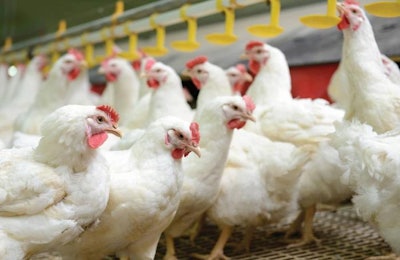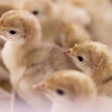
Global populations are soaring and, with this, we’re seeing the emergence of up-and-coming consumers increasingly concerned about a range of issues and with varying preferences in food choices.
For the poultry industry, everything begins with the primary breeder, which has the responsibility to provide a variety of breeds to meet these needs, while maintaining a focus on welfare and sustainability to preserve the industry and the environment for future generations.
A rising middle class
The percentage of the world population in the middle classes is anticipated to increase by approximately half between 2015 and 2030 to 64%, and the spending power of this segment will almost double to reach $64 trillion.
To quote Mario Pezzini, Organisation for Economic Co-operation and Development (OECD) Development Centre director: “The increase in average incomes and the fall in levels of absolute poverty ... suggest that an increasing proportion of the world’s population is neither rich nor poor ... but finds itself in the middle of the income distribution.”
With greater wealth comes an increase in spending on food, and one-quarter of this will be on meat. Research has shown that a rise in income directly correlates to an increase in poultry consumption
We’re also seeing a shift toward a need for transparency, as more and more consumers are informed, they want to feel connected with the origins of their food. Some demand organic foods for their families, while others want to know more about how animals live, and the impact of production on our planet.
The right bird for the right market
To serve these various interests, poultry breeders have to maintain an immense genetic pool to provide the flexibility to adapt to changing market conditions.
Leveraging this diversity of genetic traits, it is to the breeding companies’ advantage to offer the industry’s broadest selection of conventional and organic, free-range birds.
We’re seeing this demand stronger in Europe and the U.S., and expect to see it more in other areas where the middle class continues to grow.
Market trends reveal an increased interest in health perceptions, natural foods, welfare and environmental concerns, and consumers are willing to pay a premium for food with higher perceived value. A parallel trend is that, with growth in spending power and an increase in two-income families, comes a greater need for ready-made convenience foods, which require higher levels of processing.
At the other end of the scale, in some developing markets -- particularly in Asia and Africa -- there is a preference for fresh birds from local markets. The point is, no matter where consumers fall on the socio-economic spectrum, it is the responsibility of primary breeders to offer a high degree of choice.
Strengthening welfare, sustainability
While addressing multiple market needs, it’s essential to maintain a continuous focus on welfare and sustainability, which aren’t contrary to good business, but contribute to it.
Balanced genetic selection coupled with innovations in flock management is advancing the health and welfare of all breeds of birds, while boosting economic farmers’ sustainability and lessening production’s environmental impact. And, due to growing social consciousness and awareness in today’s digital age, it’s now more important than ever for poultry breeding companies to operate with high levels of communication and transparency. We need to be collaborating with all stakeholders in the industry to explain how modern poultry breeding works, and incorporating feedback.
Choice for today, tomorrow
Due to an ever-evolving consumer landscape, poultry breeders must provide the market with an array of choices to meet diverse consumer needs worldwide. Due to advances in balanced breeding, we’re able to rise to this challenge and respond to evolving market preferences, helping to preserve the industry for generations to come.

As incomes rise, demand for poultry meat increases. Volumes consumed increase and tastes become more sophisticated.

















